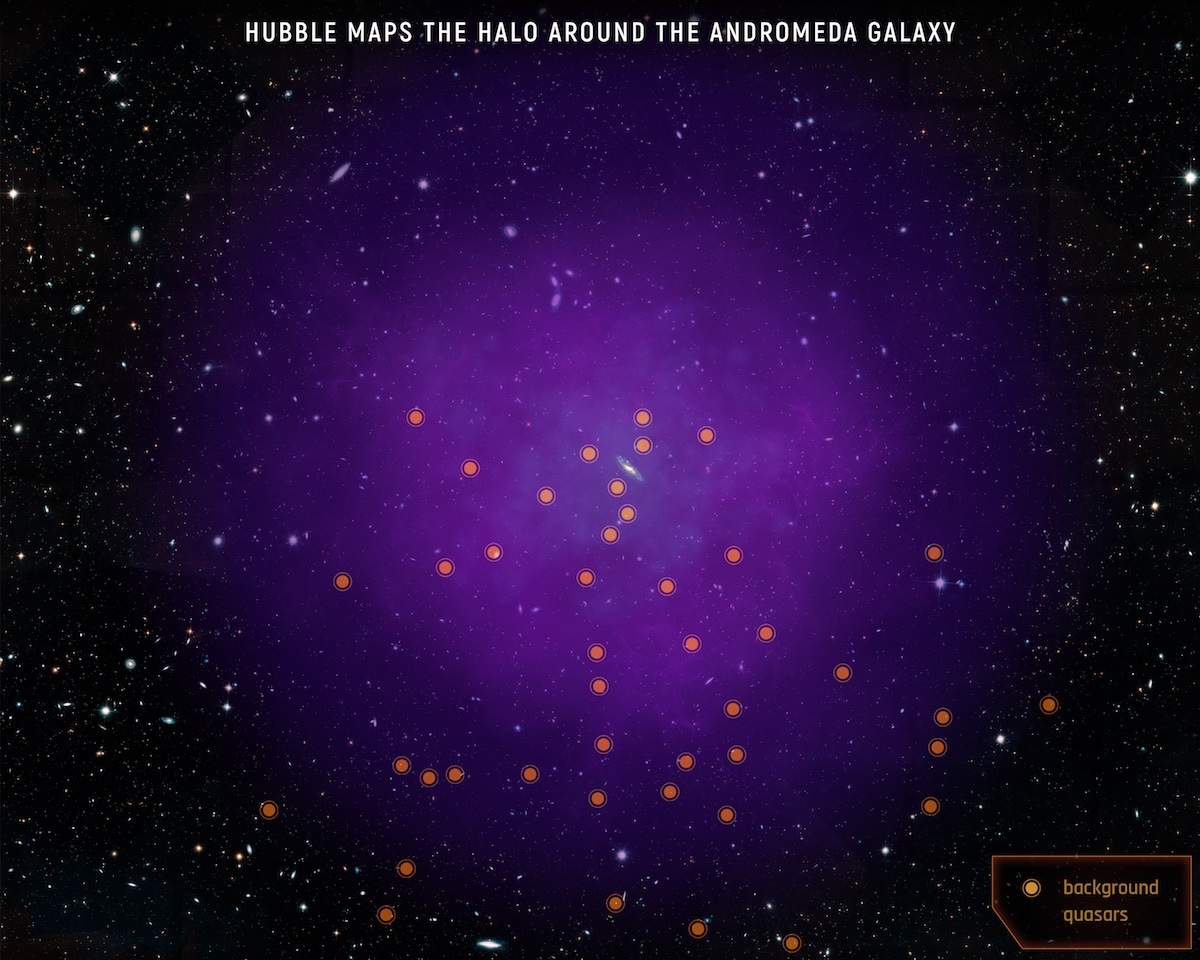31.08.2020

The immense gas halo around our nearest neighbouring galaxy is already bumping into our own, scientists suggest.
Using NASA’s Hubble Space Telescope, they mapped the nearly invisible mass of diffuse plasma around Andromeda and found that it extends 1.3 million light-years in our direction – halfway to the Milky Way – and as far as two million in other directions.
They also found that the halo has a layered structure, with two main nested and distinct shells of gas.
“[T]he inner shell that extends to about a half million light-years is far more complex and dynamic,” says study leader Nicolas Lehner, from the University of Notre Dame, US. “The outer shell is smoother and hotter. This difference is a likely result from the impact of supernova activity in the galaxy’s disc more directly affecting the inner halo.”
A signature of this activity, the researchers write in a paper in The Astrophysical Journal, is a large number of heavier elements in the halo. These are ejected into space, often violently, when a star dies.
Also known as Messier 31, Andromeda is a spiral of as many as a trillion stars about 2.5 million light-years away, and comparable in size to the Milky Way.

It is so close, the researchers say, that it appears as a cigar-shaped smudge of light high in the autumn sky. If its halo could be viewed with the naked eye, it would be three times the width of the Big Dipper, making it easily be the biggest feature on the night sky.
In the latest work Lehner and colleagues looked through the halo at the ultraviolet light from 43 quasars (brilliant cores of active galaxies powered by black holes) located far beyond Andromeda.
Using Hubble’s Cosmic Origins Spectrograph (COS) they were able to observe how the halo absorbs this light and how that absorption changes in different regions.
Ultraviolet light is absorbed by Earth’s atmosphere, which makes it impossible to observe with ground-based telescopes. The team used COS to detect ionized gas from carbon, silicon and oxygen. (An atom becomes ionized when radiation strips away one or more electrons.)
Scientists have studied gaseous halos of more distant galaxies, but they are much smaller on the sky, meaning the number of background quasars of sufficient brightness to probe their halo is usually only one per galaxy. Spatial information is therefore essentially lost.
“This is truly a unique experiment because only with Andromeda do we have information on its halo along not only one or two sightlines, but over 40,” says Lehner. “This is ground-breaking for capturing the complexity of a galaxy halo beyond our own Milky Way.”
Because we are in the Milky Way, scientists cannot easily interpret its signature. However, they believe the halos of Andromeda and the Milky Way must be very similar since these two galaxies are quite similar.
The two galaxies are on a collision course, and will merge to form a giant elliptical galaxy beginning about four billion years from now.
Quelle: COSMOS
